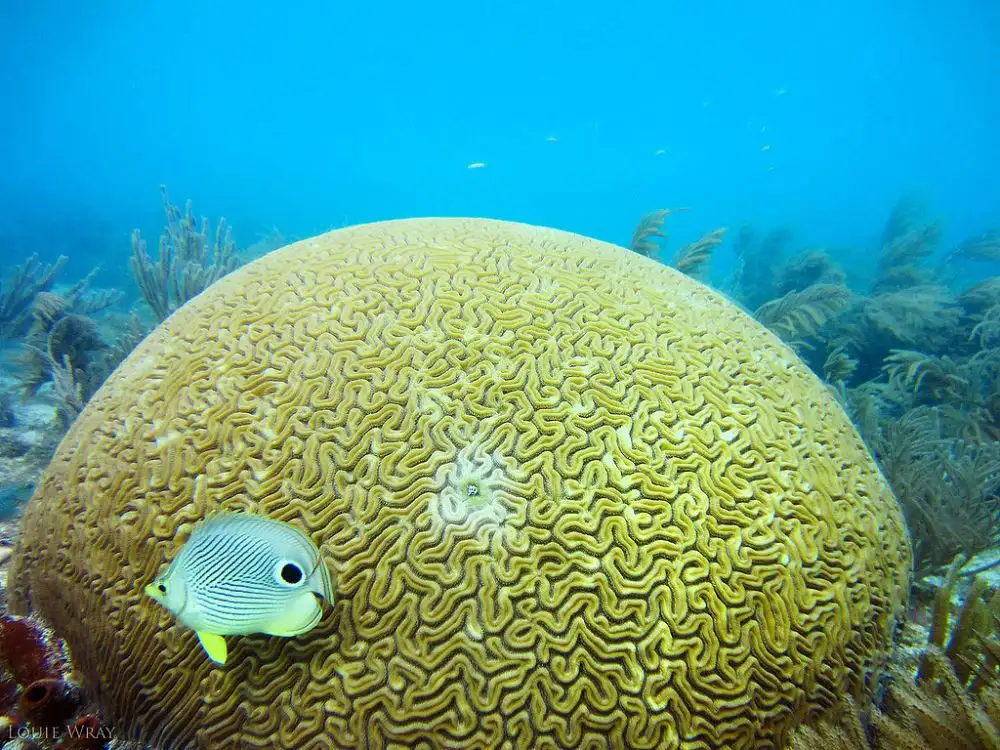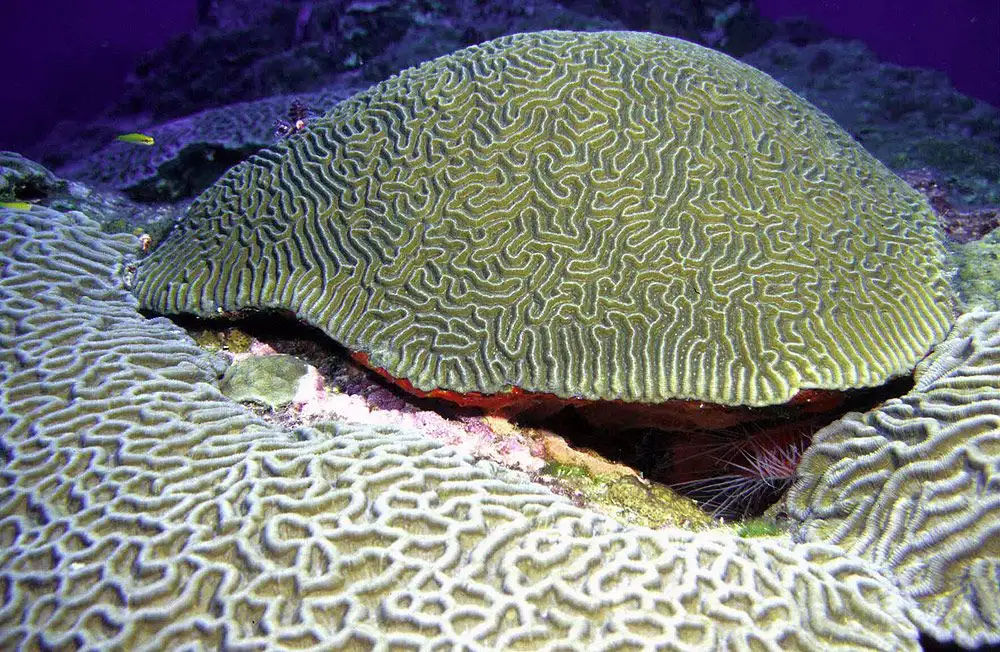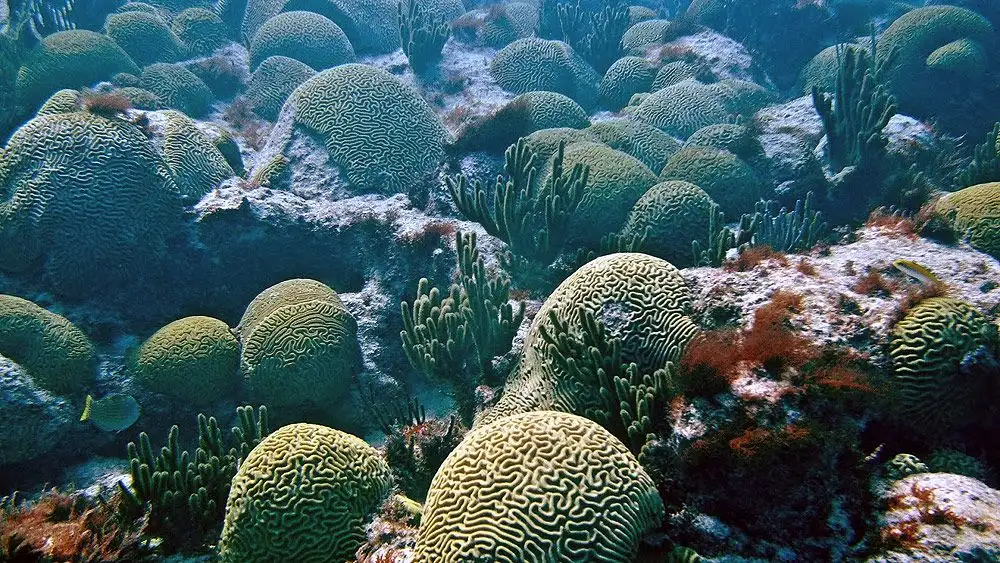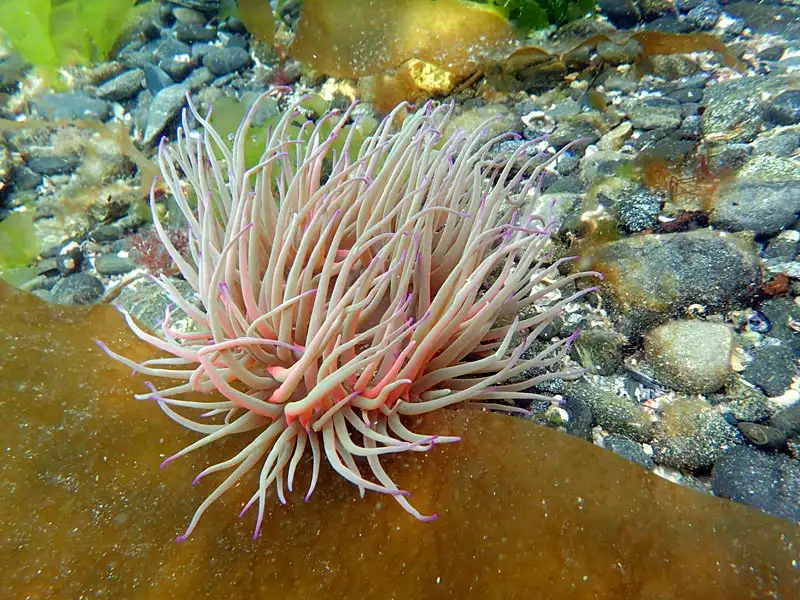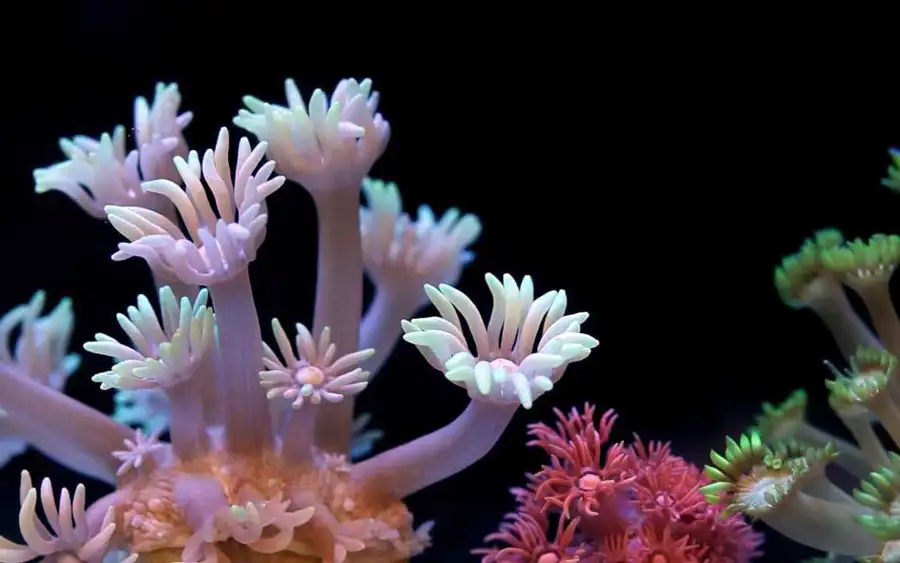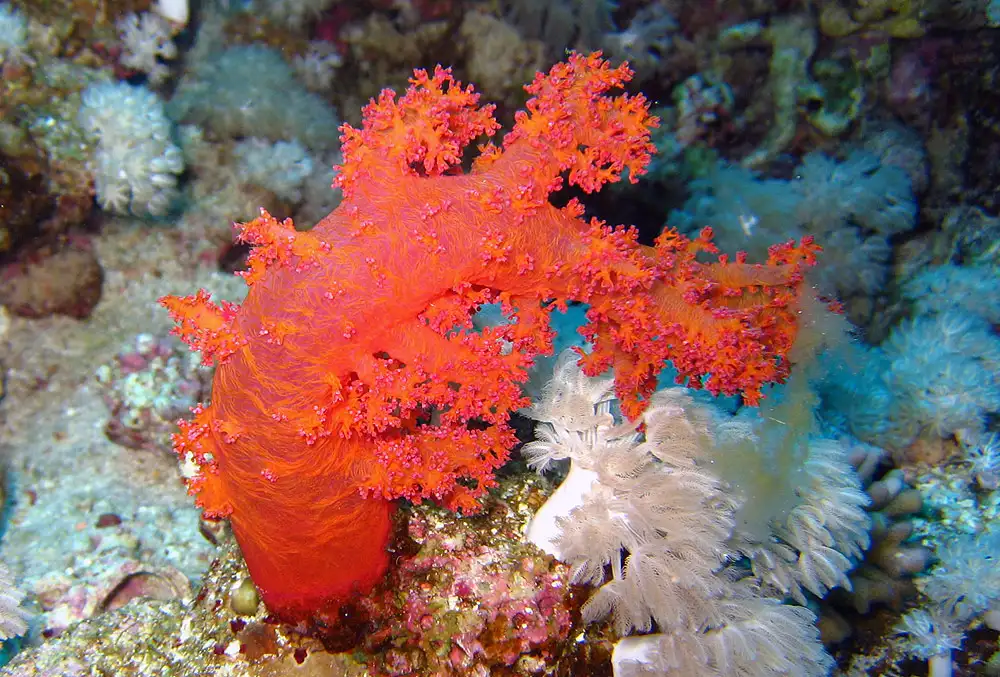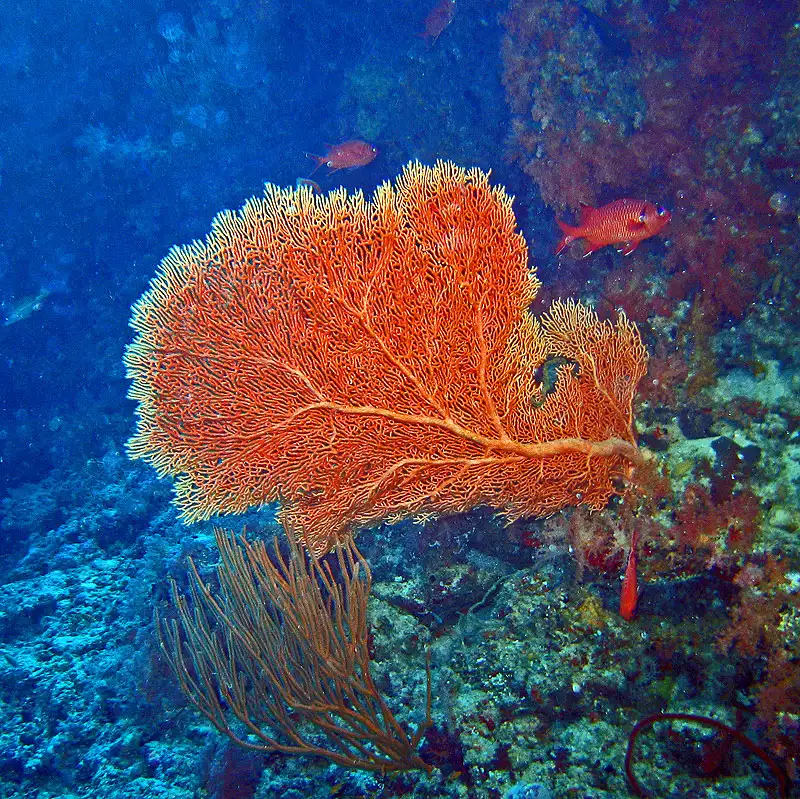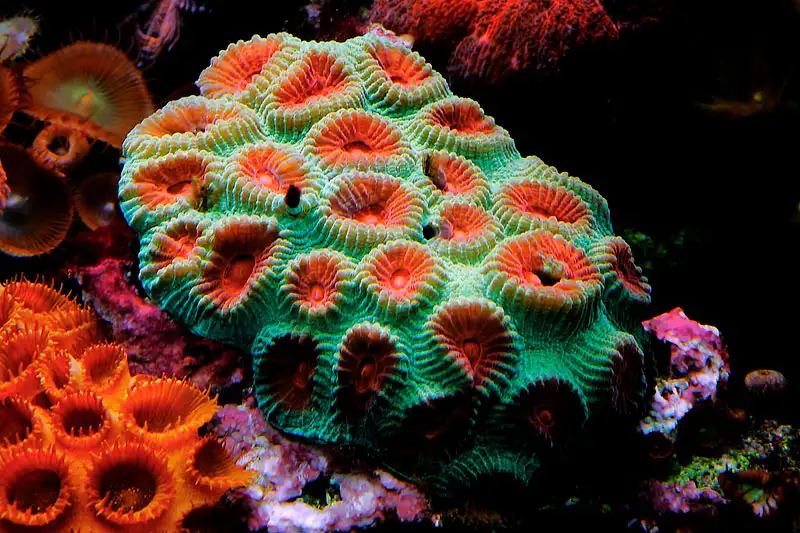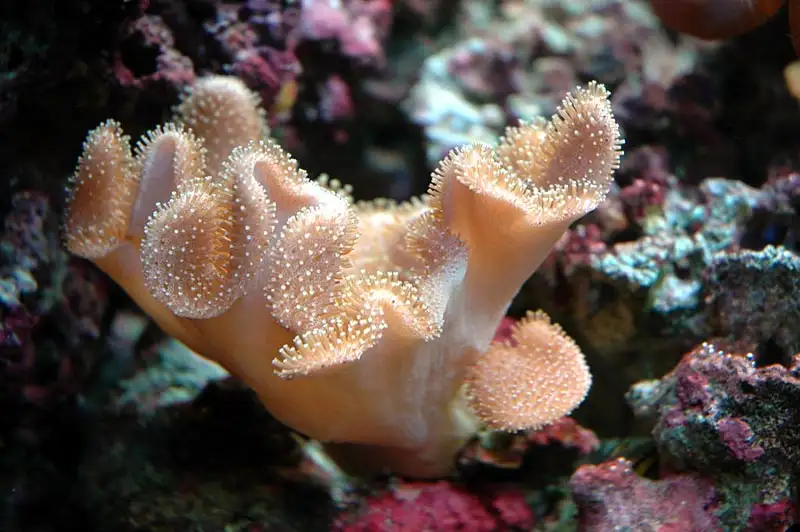Open Brain Coral
IUCN
LCBasic Information
Scientific classification
- name:Open Brain Coral
- Scientific Name:Trachyphyllia geoffroyi
- Outline:Echinodermata
- Family:Merulinidae Trachyphyllia
Vital signs
- length:Expanded diameter typically 8–20 cm; up to 25–35+ cm
- Weight:Varies with colony size; no single value
- lifetime:Long‑lived LPS coral (years to decades)
Feature
Solitary large polyp; photosymbiosis by day and nocturnal feeding; often free‑living on sand.
Distribution and Habitat
Indo‑Pacific lagoons/back‑reefs/upper outer reefs over sand or rubble (~3–30+ m) with moderate light and gentle–moderate flow.
Appearance
Crescent to ring‑like ridges/valleys; fleshy oral disc; vivid green/red/orange/pink/rainbow colours; radiating septa lines.
Details
Trachyphyllia geoffroyi, the open brain coral, is a classic large‑polyp stony coral (LPS). Adults are often free‑living on sand or rubble in lagoons and back reefs (juveniles may begin attached, then detach later). It hosts zooxanthellae (Symbiodiniaceae), relying on photosynthesis by day and extending feeding tentacles at night to capture micro‑zooplankton and particulates.
Ecology & Biology
Nutrition: primarily photosynthesis; nocturnal particulate/zooplankton feeding through the oral disc.
Growth form: typically a single large polyp (solitary colony) that can move slightly over sand as currents shift.
Reproduction: sexual broadcast spawning/planulation alongside asexual budding/fission of skeletal pieces.
Identification
Skeleton forms crescent to ring‑like valleys and ridges; the fleshy oral disc swells markedly by day. Colours include greens, reds, orange‑reds, pinks and “rainbow” combinations, with conspicuous radiating septa lines. Unlike meandroid “brain corals”, this species is solitary rather than composed of connected valleys.
Size & Longevity
Expanded diameter: typically 8–20 cm; up to 25–35+ cm under favourable conditions.
Thickness: robust skeleton and tissue; at night tissues deflate exposing hard ridges.
Life: long‑lived reef builder, persisting for many years to decades on stable reefs.
Range & Habitat
Widespread across the tropical Indo‑Pacific (Indian Ocean to W. Pacific, SE Asia, northern Australia). Common on lagoons, back‑reefs and upper outer‑reef zones over sand/rubble at ~3–30+ m, favouring moderate light and gentle–moderate flow while avoiding heavy sediment.
Threats & Conservation
Thermal stress & bleaching during heatwaves.
Sedimentation/pollution reducing photosynthesis and promoting disease.
Collection/trade—requires regulated practices; aquaculture/fragmentation can reduce wild harvest.
IUCN: assessments vary among sources; for consistency here we mark it as Not Evaluated (NE). Priorities: protect healthy reef tracts, manage nutrients/sediments and regulate tourism/trade.
FAQ
Q1. How is it different from other “brain corals”? T. geoffroyi is typically a single, large polyp with a fleshy disc,
whereas many brain corals form meandroid valleys shared by multiple polyps.
Q2. Why does it swell by day and deflate at night? Daytime inflation enhances photosynthesis and protects the skeleton; at night it retracts and extends tentacles to feed.
Q3. Preferred conditions? Moderate light, gentle–moderate flow and clean sand/rubble substrates; avoid harsh light and heavy sedimentation.
Q4. Can it be propagated? Yes—fragmentation and skeletal budding are possible under controlled aquaculture with stable water quality.

